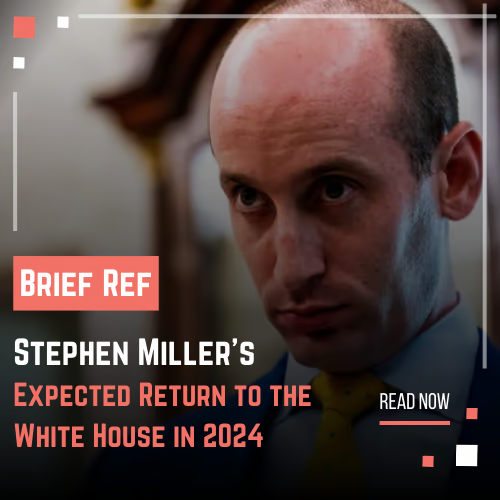What is Stephen Miller’s new role in the Trump administration?
With Donald Trump preparing for his anticipated second term, reports reveal that immigration policy architect Stephen Miller is set to return to the White House, this time as the Deputy Chief of Staff for Policy. Miller, known for his hardline approach on immigration during Trump’s first term, is expected to assume an expanded role, driving even stricter immigration policies. His appointment signifies Trump’s focus on enforcing robust immigration measures if he returns to office.
Who is Stephen Miller, and why is he significant in U.S. immigration policy?
Stephen Miller served as a senior adviser to Trump from 2017-2021, where he played a pivotal role in shaping and implementing restrictive immigration policies, including the zero-tolerance policy that led to family separations at the U.S.-Mexico border. As a leading advocate for limiting immigration, both legal and illegal, Miller’s views have significantly influenced Trump’s approach to immigration reform. Miller’s return signals a continuation, or even an intensification, of these policies, aligning with Trump’s campaign promises to address what he calls an “immigration crisis.”
When is Miller expected to start his role in the White House?
Though no specific date has been confirmed, Trump spokeswoman Karoline Leavitt told CNN that Trump will soon announce key appointments for his upcoming administration. Miller’s role, along with other significant appointments, is expected to be finalized and announced shortly after Trump assumes office, setting the stage for his policy goals early in the new term.
Where and why did Miller’s immigration policies originate?
Miller’s stance on immigration stems from a longstanding belief in strict border control and reduced immigration levels to protect American jobs and reduce strain on social services. He has repeatedly argued that limiting immigration would enhance national security and support American workers. His policies, implemented during Trump’s first term, aimed to curb illegal immigration and restrict access to asylum and visa programs. With Trump’s renewed focus on immigration, Miller’s policies may see an even stronger push, possibly nationwide.
What changes could be expected for immigration policy under Miller’s leadership?
Miller is reportedly advocating for a drastic increase in deportations, aiming to expel over a million undocumented immigrants per year—a tenfold increase compared to past efforts. This ambitious plan would likely involve expanded enforcement, stricter asylum restrictions, and heightened scrutiny of immigration applications. Additionally, Miller is expected to influence broader policies that could impact the legal immigration process, such as higher barriers for entry and more extensive background checks.
What are the potential impacts of Miller’s appointment on individuals and communities?
If Miller’s policies are enacted, significant repercussions could affect immigrant communities across the U.S., including an increased likelihood of deportation, restricted pathways for asylum seekers, and heightened barriers for family reunification. Economically, these policies may affect industries reliant on immigrant labor, particularly in agriculture and construction. For American workers, however, Trump and Miller argue that stricter immigration policies could mean greater job security and higher wages by reducing competition in the labor market.
What’s next for the Trump administration’s immigration agenda?
With Miller leading policy development, the Trump administration is expected to take immediate action on immigration reform. Potential measures include deploying additional resources to the U.S.-Mexico border, implementing more stringent checks on immigration applications, and enforcing rapid deportation procedures. Observers anticipate that these policies will spark public debate and legal challenges, as they have in the past.




